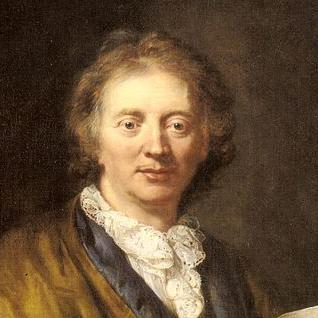François Couperin (1668-1733), known as “Couperin le Grand,” was one of the most remarkable composers of the French Baroque period. Born into a family of musicians, Couperin brought grace, elegance, and a unique French flair to the music of his time, especially in his keyboard compositions. His music is often intricate, richly ornamented, and deeply expressive, making him a beloved figure among lovers of Baroque music.
Let’s explore five of François Couperin’s most celebrated compositions, which stand out as gems in the repertoire of Baroque music.
1. Les Barricades Mystérieuses (The Mysterious Barricades)
One of Couperin’s most famous and enigmatic compositions, “Les Barricades Mystérieuses” is a short piece from his Ordre 6 in Pièces de Clavecin (Book 2). This harpsichord composition is a masterpiece of subtlety and fluidity. The hypnotic repetition of delicate arpeggios creates a feeling of suspension, almost as if the listener is peering through a veil of sound. The title remains a mystery to musicologists, but this ambiguity only adds to its allure.
Its expressive nature and harmonic complexity have inspired various interpretations, and it is often seen as a quintessential example of Couperin’s genius for blending emotional depth with French elegance.
2. Leçons de Ténèbres (Lessons of Darkness)
“Leçons de Ténèbres” is a hauntingly beautiful set of vocal pieces written for Holy Week. Composed for soprano and continuo, this set of lamentations is part of the liturgical tradition of Tenebrae, which commemorates the suffering and death of Christ. The music is delicate and restrained, with intricate ornamentation that reflects the pain and sorrow of the text.
Couperin’s “Leçons de Ténèbres” is widely regarded as one of the finest examples of sacred music from the Baroque period. Its blend of religious gravity with Couperin’s characteristic French grace makes it a deeply moving and spiritually profound work.
3. Pièces de Clavecin (Harpsichord Pieces)
Couperin’s “Pièces de Clavecin” consists of four books of harpsichord suites (known as Ordres), which contain over 230 pieces. These collections reveal Couperin’s mastery of keyboard composition, showcasing his ability to fuse dance forms, character pieces, and exquisite ornamentation into cohesive, expressive music.
Particular standouts include:
- “L’Art de Toucher le Clavecin” – An instructional preface to Book 1, this manual is essential for understanding the performance practice of Couperin’s music. It delves into the proper techniques for playing the harpsichord, focusing on touch and articulation.
- “La Visionnaire” and “La Muse Victorieuse” – From Ordre 3, these pieces represent Couperin’s command of contrasting moods, from majestic to light-hearted.
Each Ordre in the “Pièces de Clavecin” offers a vivid palette of character and mood, with works that reflect both the elegance of the French court and the subtle intimacy of Couperin’s personal style.
4. Concerts Royaux (Royal Concerts)
Written in 1722 for Louis XIV’s court, Couperin’s “Concerts Royaux” are a set of instrumental chamber music pieces composed for small ensembles, typically involving harpsichord, violin, and flute. These works combine elements of French courtly dance music with more Italianate styles, blending grace with a light, charming spirit.
Each Concert Royal contains multiple movements, which include traditional French dances like the Allemande, Courante, Sarabande, and Gigue. They showcase Couperin’s ability to merge the structured elegance of dance forms with the expressive depth of chamber music. These works are ideal examples of his dedication to pleasing the ear while maintaining a refined, regal quality.
5. Troisième Livre de Pièces de Viole (Third Book of Pieces for Viola da Gamba)
Though less frequently performed, Couperin’s “Troisième Livre de Pièces de Viole” is a stunning contribution to the viola da gamba repertoire. Written for viola da gamba and continuo, this collection of pieces displays Couperin’s remarkable sensitivity to timbre and texture. The music here is refined and intimate, often melancholy but always graceful.
Particularly famous within this collection is “La Pompe Funèbre” (The Funeral Procession), which stands out as a moving and somber lament. This work reflects Couperin’s deep capacity for emotional expression, offering a more introspective side of his compositional style.


Comments are closed